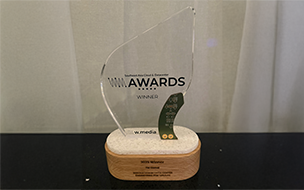Internet Protocol (IP) Transit services optimise network efficiency, enable global reachability, provide consistent digital experience, improve network performance, and enhance customer experience. But what really is IP Transit, how does it work, and why do organisations like yours need it? Here’s a deep dive into IP Transit and why it is essential for digital transformation.
What would it take to connect all of humanity, 7.9 billion of us, to the Internet in 10 years?
The good people at the International Telecommunication Union (ITU) have an answer. Or two.
US$428 billion and, to some extent, IP Transit.
At its most basic level, the thread that runs through the Internet, the one that is often relegated to the background, but is critical for the functioning of a modern, connected world—and your business—is, among other things, IP Transit.
Without IP Transit, organisations, and the world at large, would have been operating in a fragmented, disconnected, and isolated environment. It is the power of IP Transit that has been instrumental in creating a borderless world.
There are multiple benefits of an IP Transit service. It optimises network efficiency and improves network performance. It enables organisations to expand customer base by providing global reachability and increase eyeballs. It also provides consistent digital experience with uninterrupted access, thereby enhancing customer experience.
Within your organisations, cloud-based services, and new and emerging technologies are constantly reshaping your businesses, enabling digital transformation. Moreover, in the near future, enterprises will have to adopt 5G and edge computing.
And these technologies will require fast, reliable, and secure connectivity, which in part, will be powered by IP Transit.
But what is IP Transit, how does it work, and why do you need it? A deep dive into IP Transit will help organisations like yours understand how your business accesses the Internet and how your customers connect with your services, enabling you to better customer experience, optimise network efficiency, improve performance, and save costs.
Demystifying IP Transit
IP Transit is a service where an internet Service Provider (ISP) allows traffic to pass through its network to reach the rest of the Internet—or its final destination. In order to access all Internet routes, enterprises need to connect to all the autonomous systems (more on this later) out there. They can’t do this alone. They need to avail the services of an ISP who has access to reach any network on the Internet.
Simply put, any time you want to send or receive information across the Internet, you need to ‘go through’ single or multiple third-party networks. IP Transit makes this possible.
The quality of IP Transit, that is speed, consistent digital experience, global reachability, and optimum service performance also depend on the ISPs ‘Tier status’. As ISPs are classified into a 3-tier model that categorizes them based on the type of Internet services they provide, it is critical for organisations to partner with Tier 1 ISP that has global and regional reachability.
That is because global and regional ISPs open up the world of global Internet connectivity. A Tier 1 ISP has access to the entire Internet solely through its free and reciprocal peering agreements. It doesn’t pay transit fees to anyone and can reach anywhere on the internet quickly and cost-effectively.
But before we go any further, we will have to get a little technical to understand what an Autonomous System is that makes up the entire Internet.
The Role of Autonomous Systems
As mentioned earlier, an Autonomous System (AS) plays a major role in the functioning of IP Transit. The system can ‘autonomously’—without depending on a third-party—decide who to exchange traffic with on the Internet.
An AS represents a set of IP routing prefixes that belong to a network and are managed by one or more network operators on behalf of a single entity or domain. Essentially, each AS is given a unique number, called an Autonomous System Number (ASN). What this means is when an organisation owns an ASN, it can use that to establish a single gateway point to the Internet.
You might be wondering how AS communicates route information and steer traffic between each other. Enter BGP or Border Gateway Protocol. BGP practically runs the Internet. When networks interact with each other, they need a mode of transport, a ‘gateway’ to communicate, to send and receive a message. BGP makes that possible.
There are two types of interconnection mechanisms that allow AS, that is equivalent to the Internet network to connect directly and indirectly over the Internet: Peering and Transit.
In the networking space, organisations seem to use these words interchangeably. When, in fact, they are different. Let’s find out how.
For starters, both IP Transit and Peering are modes of connection between different network entities.
In IP Transit, one entity pays another for the ‘right to transit’ its upstream network. That makes one entity higher than the other as both parties do not benefit equally from the exchange.
Protecting Against DDoS Attacks
While the Internet is a gateway to new opportunities, it is also a breeding ground for cyberthreats like Distributed Denial of Service (DDoS) attacks. These attacks have the power to bring down not just individuals or organisations but an entire country. DDoS attacks overload servers or disrupt network services by overwhelming them with access requests.
For instance, the infamous Mirai and Mirai Dyn attacks rendered the entire country of Liberia offline in 2016, and threatened to bring down the Internet infrastructure of the United States. Apart from these, there have been several attacks on large cloud providers such as AWS and Google in 2020. Here’s a list. There’s no wonder then that, according to a Cisco study, the total number of DDoS attacks will double from 7.9 million in 2018 to over 15 million by 2023. These attacks lead to downtime, increased bandwidth costs, and lost customers, which eventually lead to severe financial losses. That’s why, it is crucial for ISPs, telecom companies, and enterprises—that want to leverage IP Transit—to ensure they prevent their network from DDoS attacks. Choosing an IP Transit provider that has expertise in preventing these attacks with Clean Pipe services (more on this in our subsequent blogs) is imperative.
About TM WHOLESALE
Leading Malaysian telecom service provider, such as TM WHOLESALE, offer IP Transit services via AS4788 with regional upstream, direct peering, content localization capabilities and valued added services such as Clean Pipe and Selective Routing features. TM WHOLESALE has the largest Internet subscriber base in Malaysia, and is one of the biggest regional ISPs in Asia. TM owns close to 30 submarine cables spanning over 300,000 km worldwide. It offers extensive global reachability and direct connectivity to the Internet.
In our subsequent blogs, you’ll learn how IP Transit and TM WHOLESALE’s services merge to create new possibilities for your business not just today but also for a future that depends on digital transformation.








